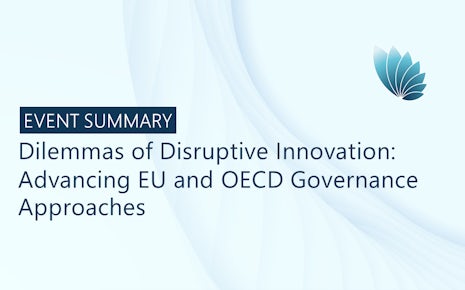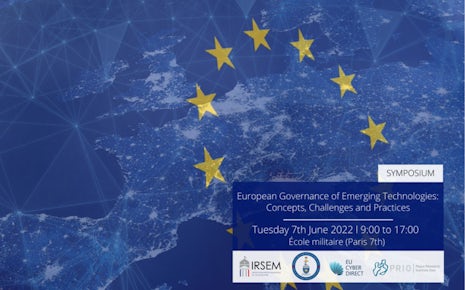– Analytical uncertainties on EDTs abound. States can better structure national security and defence approaches for the breadth of EDTs.
When it comes to ‘emerging and disruptive technologies’ (EDTs) in security and defence, we can be assured of one certainty, and that is the persistence of an uncomfortably high level of policy and technological uncertainty for the immediate to medium term.
Despite slight variation in the definition and common understanding of EDTs, they are generally understood to be particularly disruptive technologies for security and defence, bringing about radical rather than incremental change, including a paradigm shift or even revolutionary effect. Despite the possibility of many new practical opportunities across the breadth of these technologies, many unanswered (and even unanswerable, for the present time) strategic risks remain. Across many nations, analytical uncertainty perseveres; strong policy foundations are either only being established or are not yet even in place; innovation measures are patchy despite ambitions for technological ‘leadership’; and international cooperation efforts are relatively nascent.
Pervasive analytical uncertainty
It is well understood by now that each category of EDTs (from AI, biotechnology, autonomous systems and space technologies to unknown and novel EDT combinations and interactions) will have specific ramifications for security and defence. Disruptive impacts on national and/or international security are probable, while the implications for the future of war are estimated to be significant, albeit unclear. Several nations are actively emphasising the importance of EDT development to ensure the future protection of their sovereignty, security and leadership (such as the United States, China, India and Russia). Moreover, high-level apprehensions abound that some state actors are using EDTs for strategic advantages, to enhance hybrid campaigns and without due respect for international norms and regulations. The consequences for strategic stability are difficult, if not impossible, to ascertain. For example, impacts on response times and on unpredictability would heighten risks of miscalculation or unintended escalation.
U.S Intelligence Community assessments from early 2023 specifically find that ‘[n]ew technologies – particularly in the fields of AI and biotechnology – are being developed and are proliferating faster than companies and governments can shape norms, protect privacy, and prevent dangerous outcomes. The convergence of emerging technologies is likely to create potentially breakthrough technologies not foreseeable by examining narrow science and technology areas, which could lead to the rapid development of asymmetric threats’.
The list of analytical uncertainties is clearly long, and it is growing.
Notably, the EU’s ‘Strategic Compass for Security and Defence’, which provides the EU’s roadmap for the decade ahead, fully acknowledges this gap in analytical certainty. In the first instance, it identifies an important need to acquire a better analytical hold, focusing in particular on relevant trends, dependencies and the ways in which EDTs are increasingly being used by states. Without dedicating time and resources to achieving such a baseline of analytical clarity across our capitals, it is difficult to imagine effective development and implementation of national, EU or international policy for the foreseeable future. Time must be dedicated, for instance, to understanding implications for deterrence and capability development, or how to create frameworks for responsible EDT development, adoption and use in the security and defence domains.
A framework to develop strong policy foundations and reduce uncertainty
It is recognised that national and international policy will either enable or inhibit EDT development and use. And significant variances in EDT policy and technological maturity remain, both globally and between EU Member States. Yet, over a relatively short period of approximately three to four years, remarkable policy progress has been made within some nations, as well as within international and regional bodies such as the EU and NATO. These novel policies, strategies and innovation measures currently being put into place are laying the foundations for at least the next 20 to 30 years.
In practical terms, these types of measures can provide valuable indicators and a methodology for structuring national security and defence approaches to better address the breadth and depth of EDTs. Such a framework could be adapted as an implementation pathway if concrete steps are taken, in the following priority order.
First, develop an overarching strategy for EDTs in security and defence. This obvious, albeit difficult, first endeavour would be a means to very clearly determine how to approach the development and adoption of EDTs for security and defence in a structured manner, while also addressing questions surrounding the need to protect against nefarious uses.
Each category of EDT would then require a tailored response and approach from a defence and security perspective, subsequent to a prioritisation exercise that determines which EDTs should be addressed first. By way of example, NATO recently classified AI and data as priority EDTs (data exploitation enables the delivery of AI strategy). In other words, states should ideally now concentrate their efforts to develop and implement dedicated national security and/or defence strategies that are specific to each EDT. This could, for instance, include a security and defence AI strategy or a space strategy for security and defence (and so forth). As it stands, some states might be developing, or have already published, national AI or space strategies (to stick with the example), but these strategies may not even mention security and defence aspects, or may only partially address security and defence matters.
An additional practical step that could be replicated at the national level is based on the rationale behind the EU’s new Observatory on Critical Technologies, which aims to coordinate and provide a full understanding of critical dependencies, with a view to reducing supply chain security risks and protecting critical technologies for security and defence.
This suggested approach could help to create the foundations needed to develop and implement necessary innovation measures, while working in alignment with values, norms and international law. In doing so, governmental bodies will also have no choice but to work with private sector partners (including start-ups), academia and civil society – or risk being left behind where there are ambitions to develop and adopt new technologies, to achieve or maintain a technological edge and to establish international principles of responsible use.
Technological leadership is not guaranteed: Innovate or lag behind in security and defence
‘[E]ither we invest a lot on defence innovation or we will become defence irrelevant’ – these are the insightful observations of the High Representative of the Union for Foreign Affairs and Security Policy, Josep Borell. Over the last few years, organisations like the EU and NATO have established relatively new and groundbreaking innovation initiatives. Many of these mechanisms are only coming online or due to be fully functional over the course of the next year or two. But, at a minimum, they seek to address the question of how to foster EDT development and innovation ecosystems for defence and security.
In the case of the EU, the bloc is certainly playing catch-up with the rest of the world. Leaders only recently committed, at Versailles in March 2022, to increase defence expenditure; invest in critical and emerging technologies and innovation for security and defence; and foster synergies between space, civilian and defence innovation and research. This latter commitment is especially important, given that much innovation in EDTs is now civilian sector-driven, unlike past revolutionary innovations that were often the preserve of militaries. Moreover, attention is certainly being paid to stimulating engagement from non-traditional defence communities to generate innovative ideas. Many of these practical measures are ‘firsts’ – such as the establishment of defence innovation funds and defence innovation accelerators, or the first European Defence Innovation Day in 2022.
Allocating part of annual national defence or security budgets to EDTs could certainly become the norm in years to come, as could the establishment of dual-use incubators. Practical advice can also be gleaned from the annual reports of NATO’s advisory group of external experts on achieving effective innovation. These include: improving technology literacy throughout the defence organisation; establishing innovation centres; designing and facilitating new financing mechanisms for innovation with small and large private sector entities; creating innovation partnerships with industry and academia; and, most notably, creating a ‘human capital innovation policy’ on how to attract, retain and develop talented employees with technical skills and innovation mindsets. This last recommendation is highly important where the human capital aspects might often receive less attention.
Lastly, other key recommendations can be drawn from some needs identified by the EU Strategic Compass: to undertake structured information exchange, joint horizon scanning and strategic foresight. All three are especially important for responding to emerging challenges such as EDTs and hybrid threats, and are also important to achieving or maintaining globally competitive technological leadership in capabilities.
Thumbnail image credits: @filipkominik on @Unsplash.



